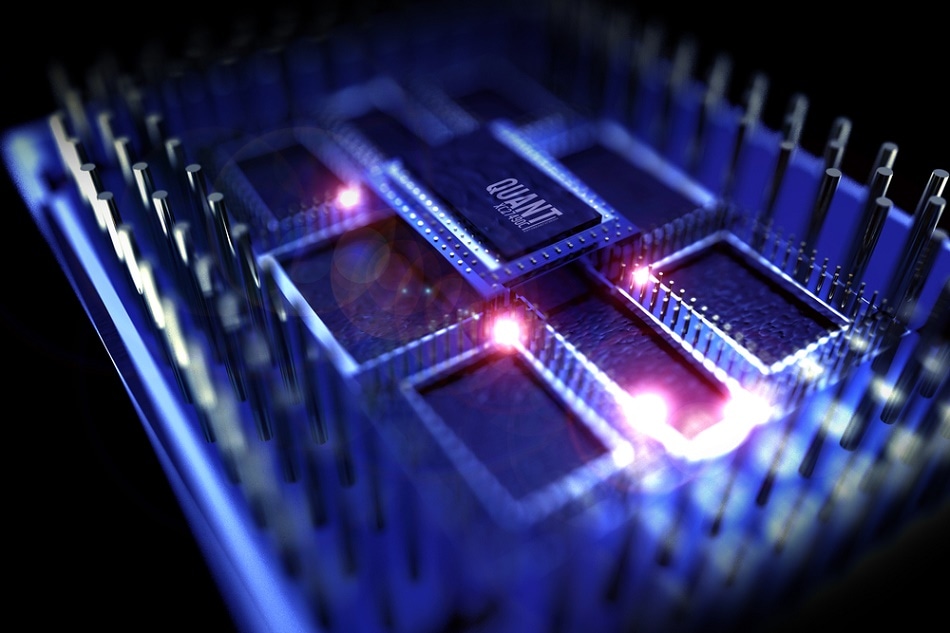Aug 4 2016
 Image Credit: welcomia/Shutterstock.com
Image Credit: welcomia/Shutterstock.com
Two contrasting strategies have come close in the race to develop large-scale quantum computers. One strategy is based on trapping ions, while the other is based on a traditional technology. Both can now develop a basic device, which would be able to run a range of quantum software.
Previous attempts were centered on running a quantum algorithm, like Shor’s algorithm for factoring numbers. A quantum device that is large enough to operate these algorithms should be able to exceed traditional PCs.
However, this strategy was shown to have limited potential, because if standard computers are developed based on this strategy, then a different laptop would need to be used to run each app. This is the reason why focus has shifted towards producing programmable quantum computers.
In May 2016 IBM set to develop a similar device, which could be used by anyone over the internet. As only five quantum bits or qubits were included in this computer, it cannot handle major issues, however it can be programmed like a standard computer. A similar device was also developed by Google researchers, but it remains inaccessible to the general public.
Both of these PCs employ superconducting qubits, which were developed using methods from the computer chip sector.
How it works: The first programmable quantum computer module based on ions
Video Credit: JQlnews/Youtube.com
Now, researchers at the University of Maryland have developed the first fully programmable and reprogrammable five-qubit computer using a unique method. Each qubit is an electrically charged particle or ion trapped in a magnetic field.
The qubits were built from ytterbium ions which were held in place by lasers and magnetic fields, a technology that emerged from atomic clocks. The five ytterbium atoms (ions) can be exploited by lasers, infusing them with exact amounts of energy and affecting their interactions with one another. Thus allows the quantum PC to be programmed and reprogrammed with different types of algorithms.
Ions are nature’s quantum units. If you have a bunch of them in a processor, all of them are identical, and that is a significant advantage.
Shantanu Debnath, Quantum Physicist, University of Maryland
This quantum technology could herald an era of quantum computing, which could aid researchers to run difficult simulations and create instant answers to complex calculations.
Earlier studies indicated that quantum PCs can rapidly perform calculations and also show that these abilities would enable the PCs to resolve issues relatively faster than standard PCs, for example, solving encryption data would take much longer in traditional PCs.
Earlier, several research teams developed tiny yet functional quantum PCs, but these were designed to run step-by-step set of operations or a single algorithm. The unusual nature of quantum physics controls the functioning of quantum PCs. The field proposed that basic building blocks of the universe, including atoms, exist in flux states called "superpositions”, meaning that atoms can simultaneously rotate in two opposite directions.
Such a superposition makes quantum computing essentially different from conventional PCs. In traditional PCs, data is represented as 1's and 0's, which are binary digits called "bits" and indicated by turning switch-like transistors on or off. However, qubits are used by quantum PCs that are in superpositions, meaning they are on and off at the same time. This allows a qubit to simultaneously carry out two calculations.
Subsequently, the new device was tested on three algorithms, which quantum PCs can perform rapidly. The Deutsch-Jozsa algorithm is only used to test quantum-computing capabilities; the Bernstein-Vazirani algorithm can be used to probe errors in quantum computing, and the last is the quantum Fourier transform algorithm, an element used in quantum-computing encryption-breaking applications.
Until now, there hasn't been any quantum-computing platform that had the capability to program new algorithms into their system. They're usually each tailored to attack a particular algorithm.
Shantanu Debnath, Quantum Physicist, University of Maryland
Entangled Talk
Trapped-ion qubits are better than the superconducting qubits, as they can remotely communicate with one another due to the unusual property of quantum entanglement. This enables the PC to process the information much more easily. “Any ion can interact within any other,” says Debnath. “Quantum entanglement is at the heart of parallel processing and speed-up.”
Superconducting qubits, in contrast, can only exchange information with their adjacent neighbor. This means in order to communicate, two distant qubits would need to work through all the qubits present in between. “That is something they are going to pay for in the long term,” says Debnath.
The advantage is that present chip fabrication technology should make it relatively easier to build a large number of superconducting qubits.
According to Simon Devitt of the RIKEN Center for Emergent Matter Science in Saitama, Japan, superconductors and ion traps are the two most sophisticated quantum hardware methods available, but only time will tell which method will forge ahead.
Quantum information technology is certainly going through a second renaissance, and technological advances and investment are increasing at a faster and faster pace. Results like this are great to see and I hope they keep coming.
Simon Devitt, RIKEN Center for Emergent Matter Science
The combined algorithms, Deutsch-Jozsa and Bernstein-Vazirani, ran 95 and 90% of the time, respectively. The quantum Fourier transform algorithm, which is considered to be the most difficult quantum calculations, had a success rate of 70%. The team intends to test more algorithms on the device in the coming days.
Debnath said. "We'd like this system to serve as a test bed for examining the challenges of multiqubit operations, and find ways to make them better," Debnath told Live Science.
The study findings have been published in the journal, Nature.